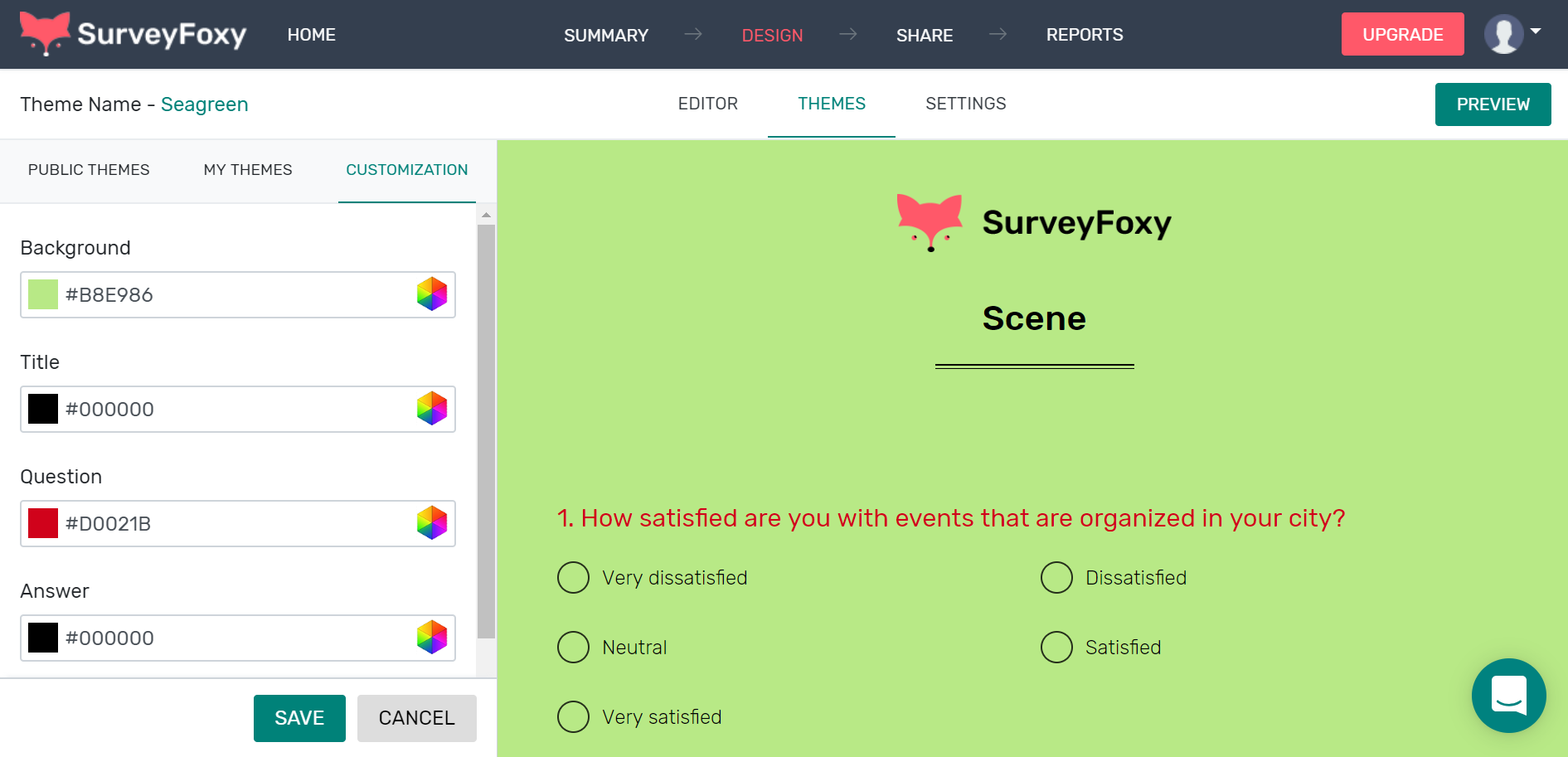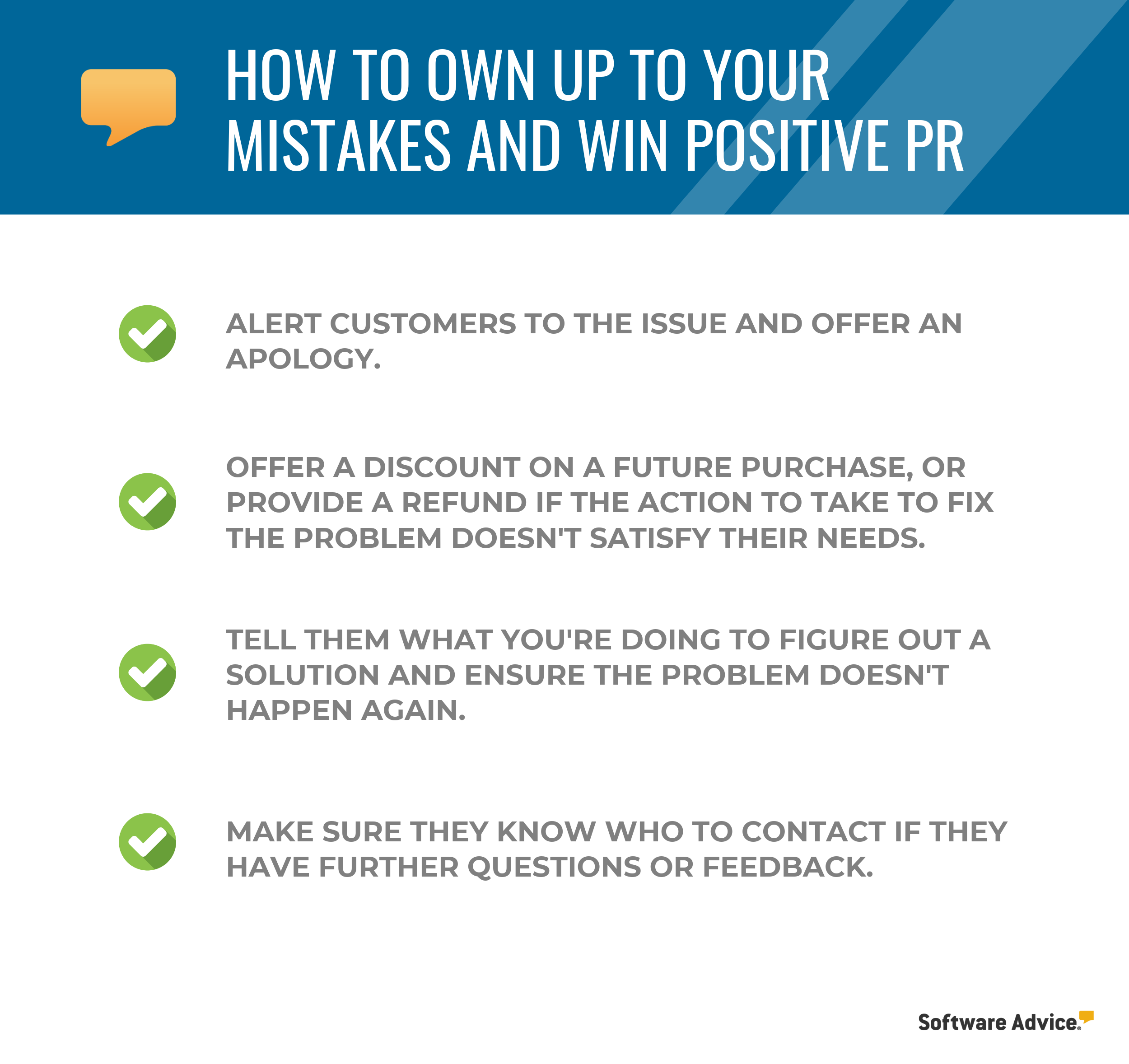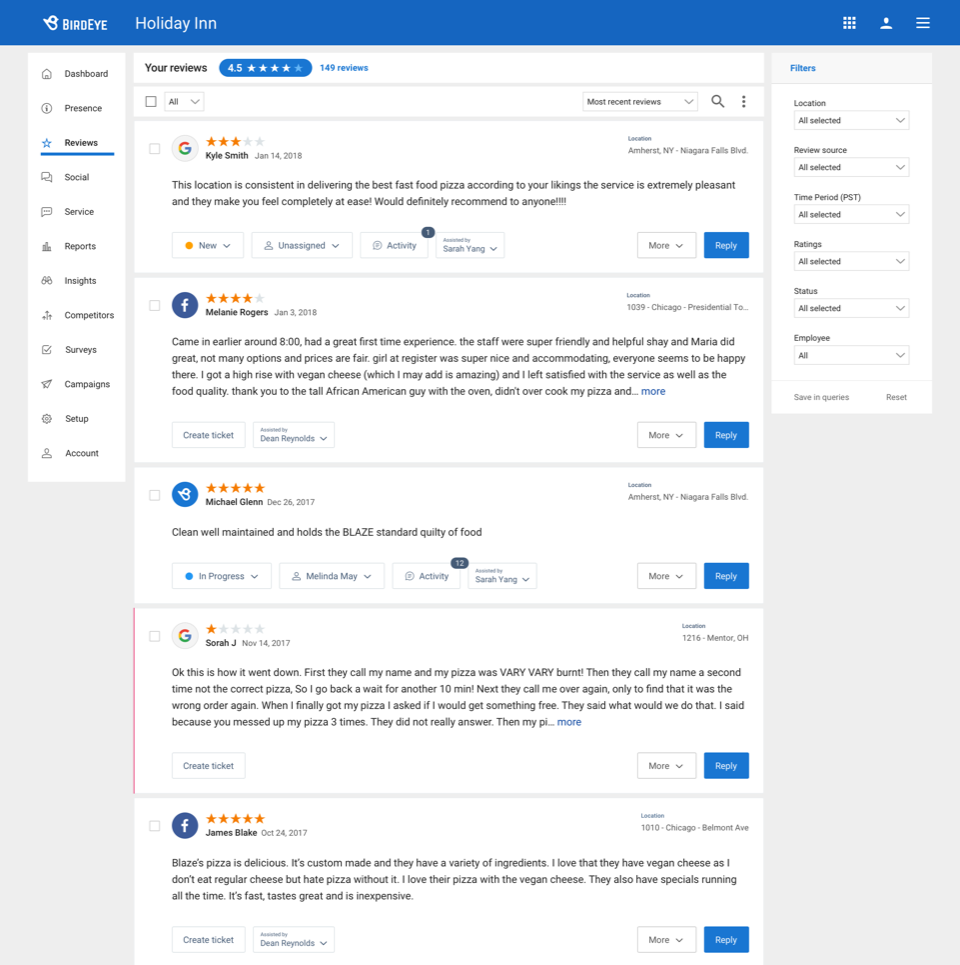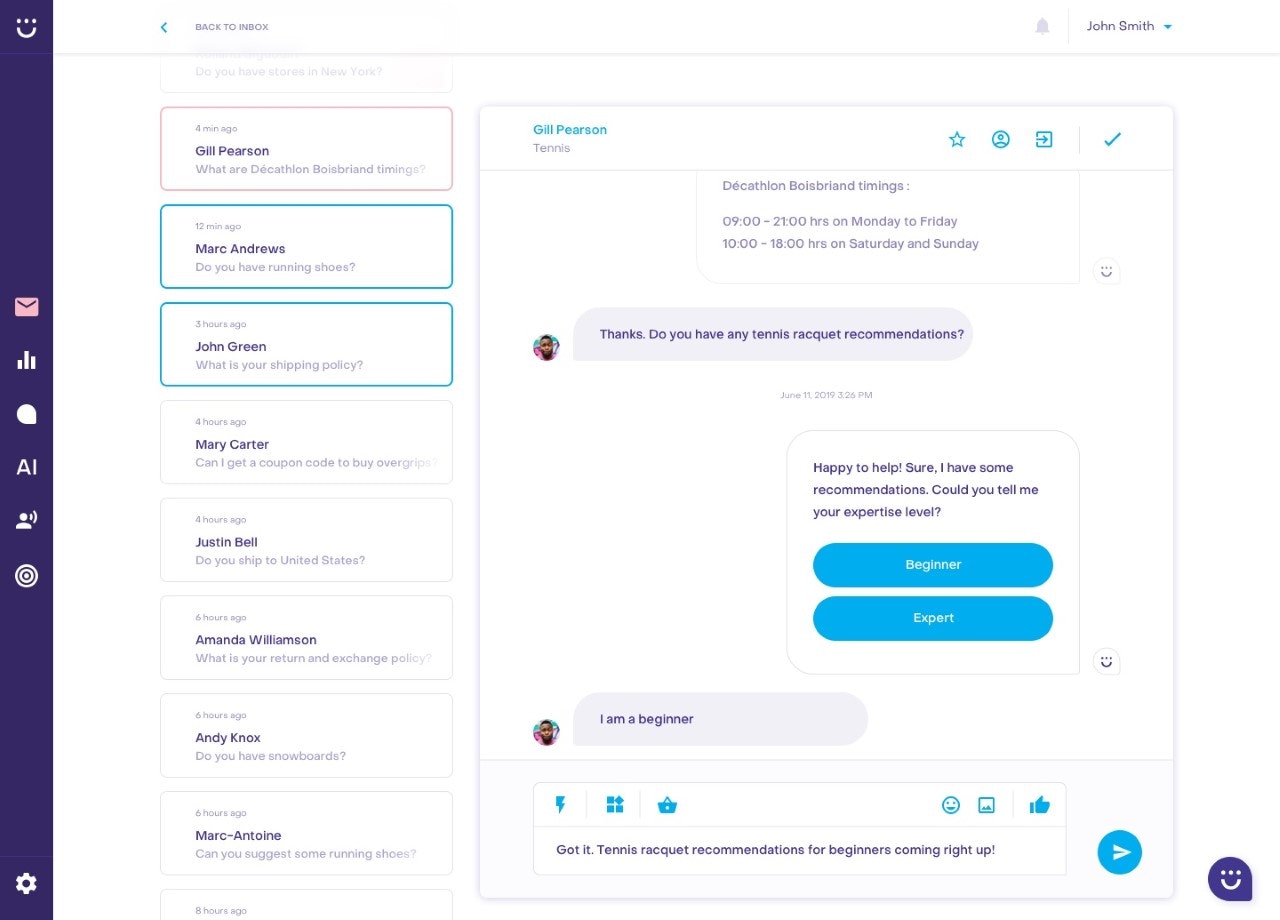6 Tips to Shift from Reactive to Proactive Customer Service
For many businesses, the default approach to customer service is to respond to problems as they arise. This reactive method is tried and true, but brand loyalty is gained when you’re able to impress and delight your more digitally savvy customers with truly stellar, proactive customer service.
Customer expectations for more proactive customer service is only going to increase in the future. In fact, Gartner predicts an increased use of artificial intelligence (AI) and continuous intelligence in proactive customer service by 2023 (full content available to Gartner clients).
Don’t worry though, we’re here to make sure you’re equipped by providing you with six specific actions you can take to start wowing your customers with a successful proactive customer service strategy.
1. Ask customers for feedback
Customer service is about giving customers what they want, and there’s no better way to find out what they want than to ask them. Businesses that regularly check in with customers can easily identify areas of weakness and correct them before customers become unhappy.
It sounds obvious, but maintaining regular contact with all your customers is easier said than done, especially if you have a large client base. That’s where software comes to the rescue: customer relationship management (CRM) software and survey tools can help you stay on top of maintaining those important connections.
We’ve written extensively about CRM software here at Software Advice, but if you want a good place to start, check out our primer “What Is Customer Relationship Management? Defining CRM,” where we go over what CRM is and how it can help your business.

Survey customization example from SurveyFoxy
With survey software, you’ll be able to make brand-specific customized surveys to send out to your clients. And remember, you’re soliciting feedback to improve your customer service, so be sure to be receptive to feedback.
2. Announce mistakes before customers find out
It’s always better for customers to hear about a problem directly from you instead of realizing the product or service doesn’t do what they need it to, when they need it. If your company identifies a problem, you can build customer trust and avoid damaging PR by taking the following actions:

According to one report, Barefoot Wines discovered a barcode error that led a shipment of wine to ring up for less than it should, which lost the distributor money. The company was quick to own up to the mistake and informed the distributor about it in person, with a check in hand to cover the loss. The client was grateful, and a potential cause for complaint became a memorable experience of Barefoot’s commitment to serving their customers.
3. Reward customer loyalty with discounts and offers
The lesson airlines learned decades ago can be applied to any business: offering tangible rewards for regular business is a powerful loyalty-building tool.
Loyalty programs build goodwill by demonstrating a company’s desire to reward a customer to thank them for their business. Proactively reaching out to customers with offers in between purchases provides an additional opportunity for positive interactions with customers to strengthen their relationship with the company.
It can also solve problems customers didn’t even know they had by alerting them to something they may be missing out on and offering a way to fix it. Sending an email to a customer a couple of months before their two-year subscription renewal is due and offering a discount to thank them for their business is likely to kindle their desire to renew. It also means the customer doesn’t have to call or email to renew themselves, which prevents any lapses in their subscription and ensures their continued satisfaction.
4. Pay attention to what customers are saying online
If you’re not paying attention to what customers are saying about your business online, you are missing key opportunities. Reaching out to customers who mention your company, be it in a good or bad context, allows you to preemptively address their needs and increases customer satisfaction.
Morton’s Steakhouse discovered this when they saw a popular blogger’s playful tweet suggesting they deliver steaks to him at the airport when he landed. To his extreme surprise and delight, a tuxedo-clad Morton’s employee was waiting for him upon arrival, steaks in hand. The story went viral and earned the steakhouse a reputation that routinely lands them a spot in pieces like this one.
To accomplish a similar win, consider implementing reputation management software that will alert you to any mentions of your brand online.

BirdEye’s review response tool
Positive mentions can present opportunities to show your gratitude, whether you go the extra mile like Morton’s, or simply respond to let the customer know you noticed and appreciate them. For complaints, respond with an apology, a description of what the company is doing to correct the issue, and a gift certificate or discount to make up for any inconvenience.
5. Create content that answers common customer questions
Many customers prefer to find answers to their problems themselves rather than having to call or email a company. If you make helpful information difficult or impossible to find, you’re cheating yourself out of a valuable opportunity to satisfy customers.
In fact, a Forrester survey even revealed that 53% of customers will give up on an online purchase altogether if finding the answer to their question proves too difficult. One of the easiest ways to please customers in search of a solution is to make answers to common questions easy to find.
You can identify these questions by doing the following:
Talk to customer service representatives
Use survey data
Identify the most frequent searches performed on your website
Review customer service call and email logs
Group answers in one place, such as a frequently asked questions (FAQ) section on your site. To provide more detailed information about common issues, create articles, blog posts, and webinars that provide a more extensive guide to addressing the issue.
6. Include a live chat option on your website
Live chat software assures website visitors that someone at the company is there to provide any information needed and saves them the trouble of having to search for an answer or call or email the company.
HubRunner, a web design company, decided to implement live chat on their site to increase interaction with website visitors. The feature makes it easier for customers to contact the company and enables staff to build better relationships with them.

What live chat looks like for your employees in HeyDay
Cassie Crudo, operations manager for HubRunner, recalls a past scenario where a lead who became a customer “was excited to find out that the person she was asking questions to would also be her dedicated account specialist and was the person she had met at the tradeshow the week before.” The feature offered a way to provide personal, helpful information to a customer who was still deciding whether or not to go with the services of that particular company.
Proactive customer service is possible with help from software
Proactive customer service doesn’t just help you keep the customers you have happy. By turning your customers into advocates for your brand, it becomes a marketing tool that drives new business. Investing a little extra in a proactive customer service approach now is a valuable strategy that can result in considerable dividends down the line.
As demonstrated, one of the best ways to create a culture of proactive customer service in your business is to invest in certain types of software.
If you’re unsure where to begin and want to have a one-on-one chat about software options, you can make an appointment with one of our advisors for a 15-minute consultation to see which software would work best for your company.